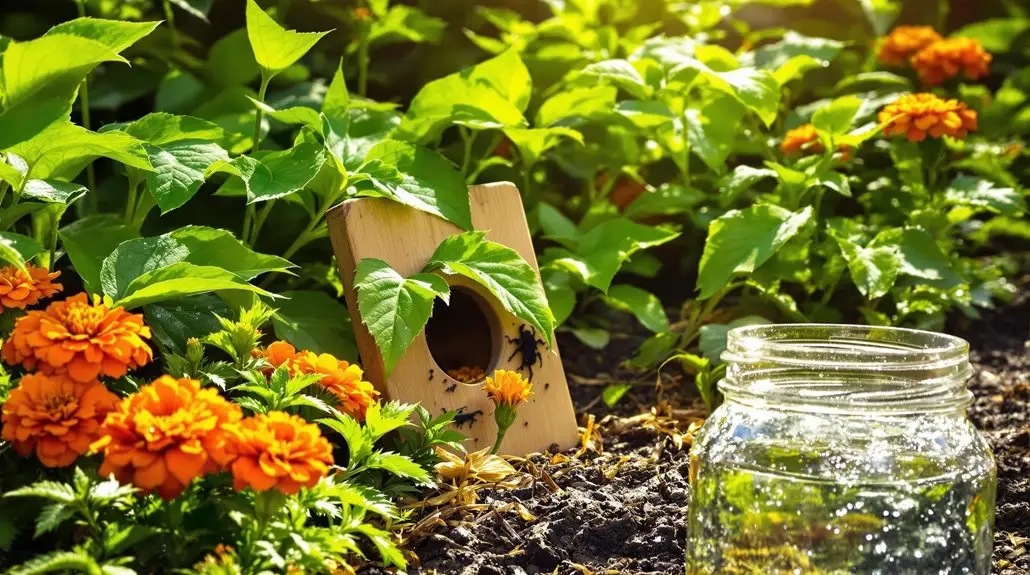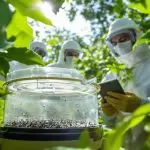To manage pests effectively, start by sealing cracks and gaps around doors and windows to keep them out. Maintain cleanliness in your yard by trimming bushes and clearing debris that can attract pests. Use airtight containers for food storage and guarantee surfaces are kept clean. Regularly inspect your home for signs of pests and employ physical barriers, like screens, to prevent access. Consider planting insect-repellent plants for extra protection. By staying proactive and making these adjustments, you’ll find it easier to keep pests at bay. There’s more to explore that can enhance your pest management strategies.
Key Insights
- Seal cracks and gaps around doors and windows to prevent pest entry.
- Maintain cleanliness by regularly washing dishes and emptying garbage to eliminate food sources.
- Use physical barriers like screens and airtight containers to deter pests.
- Conduct routine inspections of your home and yard for signs of pest activity.
- Store food properly and rotate stock to minimize pest attraction.
Prevention and Maintenance Techniques
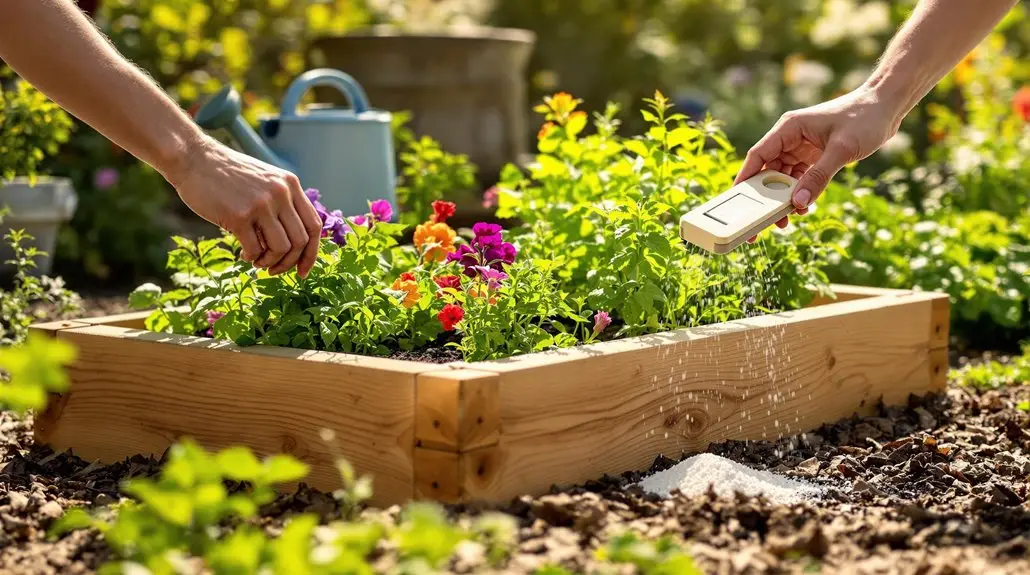
Effective pest management begins with prevention and maintenance techniques that keep your home pest-free. You want to create a welcoming environment, and that starts with sealing any cracks and gaps. Inspect your doors and windows, and use caulk or weather stripping to close off any entry points. Regularly checking for rodent control measures can further enhance your home’s defenses against pests.
Proper food storage is another crucial step; store your food in airtight containers and clean up crumbs right away to avoid attracting unwanted guests. Additionally, employing child-safe methods can ensure that your pest prevention strategies are safe for the entire family.
Regular yard maintenance is essential, too. Trim bushes, clear debris, and keep your gutters clean to prevent mosquitoes from breeding. You can also implement cultural control practices, like choosing the right plants and managing watering schedules, to create a healthy outdoor space.
Routine inspections are your eyes on the ground. Check for signs of pests daily or weekly, depending on the type you’re dealing with. Understanding environmental conditions like humidity can help you predict pest outbreaks.
When you spot a pest, identifying it accurately is key to deciding the best course of action. Physical barriers like screens and tight-fitting food containers can deter pests effectively.
Consider using traps or mechanical control methods, like vacuums, to keep your space clean. Finally, maintaining cleanliness in your living areas and ensuring proper garbage disposal can greatly reduce pest attraction.
DIY Pest Control Solutions
When it comes to keeping pests at bay, DIY pest control solutions can be both effective and budget-friendly. By maintaining a clean and organized home, you create an environment that’s less inviting for pests.
Start by washing dishes daily and cleaning any food scraps from the sink to eliminate food sources. Make certain you drain dirty dishwater after each use and wipe down kitchen counters regularly. Store your food and drinks in sealed plastic or glass containers, and use garbage cans with locking lids, emptying them often. Common pests such as roaches and ants are attracted to accessible food sources, so proper food storage is crucial.
In your yard, keep the grass mowed and remove weeds, piles of leaves, and debris. Regular yard maintenance elevates wood piles off the ground or stores them in closed boxes to deter pests. Trim back shrubs and trees that might touch your home, as these can serve as bridges for pests.
Managing moisture is key, too. Repair any leaky pipes or faucets, and consider using a dehumidifier in damp areas like basements. Ascertain good ventilation throughout your home to reduce humidity levels, as many pests thrive in moist environments.
You can also plant insect-repellent plants around your property for an added layer of defense. Incorporating natural pest control methods can further enhance your pest management strategy.
Sealing Entry Points Effectively
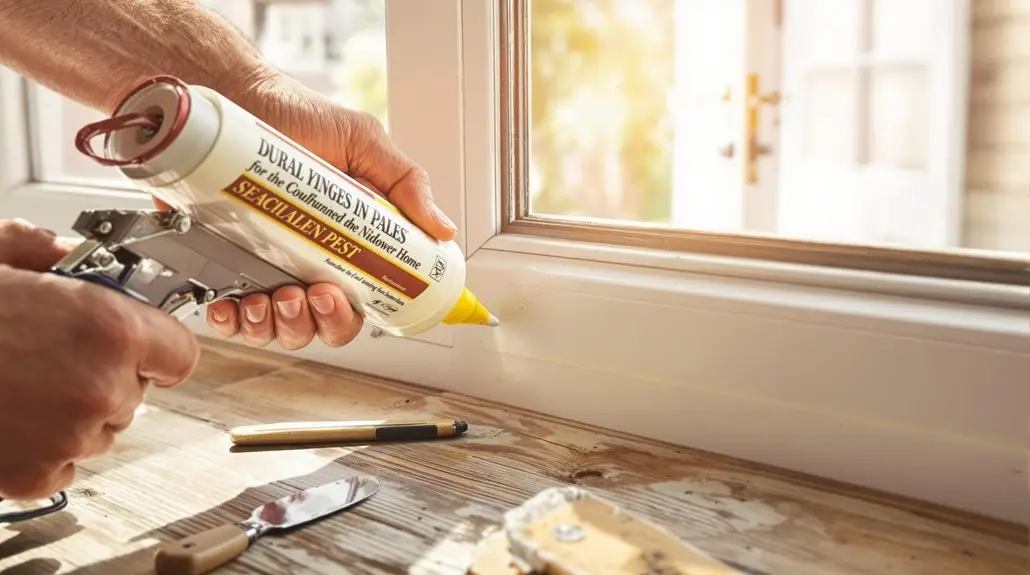
Keeping your home free of pests involves more than just DIY solutions; sealing entry points is an essential step in prevention. You might be surprised at how many pests sneak into your home through tiny gaps and cracks. By taking the time to identify and seal these entry points, you can create a more secure and comfortable living space for you and your loved ones. Effective pest control is achieved through safety-first approaches.
Here are some effective ways to seal those entry points:
- Inspect Your Home: Look around doors, windows, pipes, and vents for gaps or cracks. Don’t forget to check the attic, crawlspaces, and basement, as pests love to hide in these areas. Regular inspections of your home’s exterior for wear and tear can also help you identify potential entry points before they become problems.
- Use the Right Materials: Seal gaps with weather-resistant materials like steel wool, caulk, or expanding foam. For doors and windows, consider installing door sweeps and weatherstripping.
- Repair Screens: Make sure to repair or replace any damaged screens on windows and vents. This simple step can greatly reduce pest entry.
- Regular Maintenance: Conduct routine inspections of your home’s exterior and interior. Keep an eye out for new cracks and repair them promptly to maintain a pest-free environment. Community awareness increases demand for sustainable pest control, leading to better prevention strategies.
Environmental Adjustments for Homes
To keep pests at bay, you need to reduce damp conditions around your home. Regularly clear debris from gutters and landscaping to prevent standing water, which attracts unwanted critters. Implementing Integrated Pest Management (IPM) strategies can further enhance your efforts by addressing the underlying causes of pest problems. Additionally, utilizing natural fertilizers can promote healthy plant growth, making them more resilient to pest infestations.
Reduce Damp Conditions
Damp conditions in your home can create a perfect environment for pests, so it’s crucial to tackle moisture issues head-on.
By making some simple adjustments, you can greatly reduce the risk of pest infestations and create a more comfortable living space for you and your loved ones.
Here are four effective strategies to reduce damp conditions:
- Fix Leaks: Inspect pipes, tubs, and sinks for leaks. Confirm gutters direct water away from your home and repair any roof leaks promptly. Organic pest control services can help address any infestations that arise due to moisture.
- Improve Ventilation: Use exhaust fans in kitchens and bathrooms, turn them on while cooking or showering, and open windows periodically to enhance air circulation. Moist conditions promote mold growth, which serves as a food source for many pests.
- Utilize Dehumidifiers: Set up dehumidifiers in humid areas like basements and adjust the humidistat to maintain ideal humidity levels (30-50%).
- Manage Water Sources: Eliminate standing water outdoors and address any flooding quickly. Cover dirt in crawlspaces with plastic to prevent ground moisture from seeping in.
Clear Debris Regularly
Regularly clearing debris around your home is essential for preventing pest infestations. By maintaining a clean environment, you create a space that feels welcoming to you and uninviting to pests. Here are some effective strategies to help you manage debris:
| Action | Benefits |
|---|---|
| Remove food and organic waste | Cuts off food sources for pests |
| Clean up pest droppings and remains | Reduces disease risks |
| Manage recyclables | Disrupts pest habitats |
| Maintain clean living areas | Minimizes hiding spots |
| Store food properly | Keeps pests at bay |
Ensure food waste is stored in a cool, dry place in covered containers, and empty them regularly. Proper cleaning methods are crucial when addressing pest droppings; using disinfectant instead of sweeping can effectively reduce health risks. Clean up any pest droppings with disinfectant instead of sweeping, as this can spread germs. Rinse recyclables to remove food residues and use metal bins to deter pests. Finally, declutter living spaces and seal any gaps that might invite unwanted guests. By following these simple steps, you’ll cultivate a cozy home environment while keeping pests away. Your efforts will help create a space you can truly enjoy!
Monitoring and Detection Methods
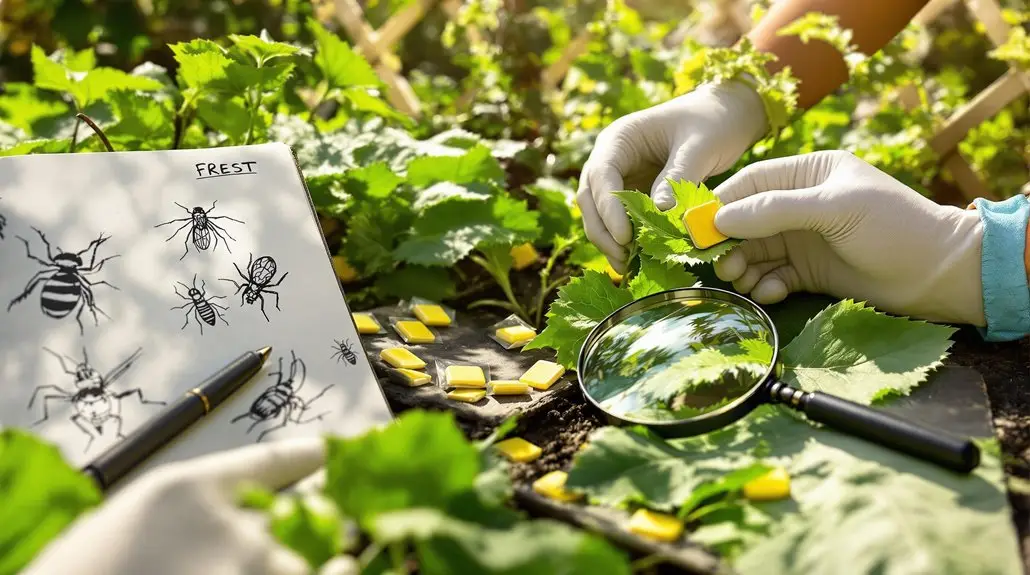
Effective pest management hinges on robust monitoring and detection methods that help you catch problems early. By being proactive, you can minimize pest-related issues and maintain a healthy environment. Here are some effective strategies to implement:
- Conduct Regular Inspections: Take time to visually inspect your plants, structures, and surroundings. Look for signs of pest damage, such as chewing injuries, discoloration, or spots on leaves and fruit. Don’t forget to check for structural issues like holes or sanitation problems, as regular inspections are crucial for early detection of pest populations.
- Utilize Specialized Tools: Equip yourself with handy tools like flashlights to detect pests at night, hand lenses for identifying tiny invaders, and sticky traps for monitoring insect and rodent activity. These tools can greatly enhance your detection efforts.
- Implement Sampling Techniques: Use pheromone traps to monitor key pest populations and assess their thresholds. Employ beating trays to collect insects from plants for a closer look. Regular trapping can offer valuable insights into pest behavior.
- Collect and Analyze Data: Keep a record of pest abundance and environmental conditions. Use tables to standardize your findings and evaluate the effectiveness of your control measures. This analysis will help you make informed decisions moving forward.
Essential Sanitation Practices
Keeping your environment clean is vital for pest management. By implementing proper waste management and effective food storage practices, you can greatly reduce pest attraction. Effective pest management programs are essential for controlling infestations. Let’s explore some essential sanitation practices that can help you maintain a pest-free space.
Cleanliness Reduces Pests
Maintaining a clean environment is your first line of defense against pests. By prioritizing cleanliness, you’re not just keeping your space tidy; you’re actively reducing the chances of a pest infestation.
Remember, even the tiniest crumbs or dust in overlooked areas can be a breeding ground for pests. Here are some essential practices to take into account:
- Deep Clean Regularly: Focus on hard-to-reach spots like cracks in the floor and behind furniture to eliminate pest habitats.
- Train Sanitation Teams: Make sure your cleaning crew understands the importance of thorough cleaning and can spot signs of pest activity.
- Inspect Storage Areas: Regularly check ingredient storage rooms and warehouses to keep these areas free of pests. Additionally, being proactive about cleanliness can help you avoid the annual property damage that pests like termites can cause.
- Stay Dry and Ventilated: Keep indoor spaces dry and well-ventilated to discourage pests from taking up residence.
Proper Waste Management
How can proper waste management greatly reduce pest problems? By taking proactive steps in managing waste, you can create an environment that pests find less inviting.
Start with securing your garbage bins. Use tight-fitting lids and keep them closed at all times. If you’re really serious, consider bins with locking mechanisms or weights to deter pests. Remember to place these bins away from buildings to minimize pest access.
Establish a routine for waste disposal; empty those bins regularly and coordinate with local waste collection services. This keeps garbage from piling up, which can attract unwanted visitors. Additionally, maintaining a safe and healthy environment is essential in preventing pest infestations.
Segregating your waste is also key. Use designated bins for food scraps and make recycling a habit to reduce organic waste.
Don’t forget about maintenance! Regularly inspect your waste areas, clean bins with disinfectants, and remove any spills or debris immediately.
Educating your family or community about these practices fosters a collective effort in pest management. Together, you can create a cleaner, pest-free environment that everyone can enjoy!
Effective Food Storage
Effective food storage is essential for preventing pest infestations and ensuring food security. By following a few straightforward practices, you can create a secure environment for your food and minimize pest risks.
Here are some effective strategies you can implement:
- Keep It Clean: Regularly clean food prep surfaces, utensils, and storage areas. A clean space is less inviting to pests.
- Temperature Matters: Store perishable foods below 41°F. Always monitor temperatures to keep food fresh and secure.
- Prevent Cross-Contamination: Use separate cutting boards and containers for raw and cooked foods. This keeps your meals secure and delicious.
- Smart Packaging: Choose airtight containers, label everything with contents and expiration dates, and rotate stock using FIFO.
Frequently Asked Questions
What Are the Most Common Pests to Look Out For?
When you’re at home, keep an eye out for common pests like flies, spiders, and ants.
You might also notice mosquitoes and gnats buzzing around, especially in warmer months.
If you’re in certain regions, cockroaches may become a problem, while mice and rats could be more prevalent in the Northeast and Midwest.
Urban areas often face bed bug concerns, so staying alert can help you maintain a comfortable living space.
How Can I Identify a Pest Infestation Early?
Identifying a pest infestation early is like catching a whisper in a crowded room; it requires keen attention.
You’ll want to regularly inspect hidden areas, like inside textiles and beneath furniture. Look for signs such as frass, exit holes, or even the pests themselves.
Using tools like a flashlight or magnifier can help you uncover the clues. Document your findings and stay informed—being proactive fosters a healthier environment for everyone.
Are There Pets-Safe Pest Control Methods Available?
Yes, there are plenty of pet-friendly pest control methods you can use!
You can try essential oils like peppermint or lavender to repel insects, and diatomaceous earth for a more direct approach.
Sticky traps are effective without harmful chemicals, and sealing entry points keeps pests out.
Maintaining cleanliness and proper food storage also helps.
Incorporating these methods not only protects your pets but creates a comfortable and secure home for everyone.
When Is the Best Time to Implement Pest Management Strategies?
Think of pest management as a seasonal dance, where timing is everything.
You’ll want to start your strategies in early spring, when pests awaken from their slumber. This is when you can catch them off guard and reduce their numbers.
As the seasons progress, you’ll need to adapt your approach, treating during peak activity in summer and creating barriers in autumn.
Staying vigilant throughout winter guarantees your home remains a secure haven.
How Do Weather Changes Affect Pest Activity?
Weather changes greatly affect pest activity. When temperatures rise, you’ll notice insects becoming more active, increasing the chances of infestations.
In spring, pests emerge, while summer heat brings out mosquitoes and wasps. As fall approaches, pests seek shelter indoors as temperatures cool.
Heavy rainfall can also lead to increased moisture, attracting pests like termites and rodents.
Staying aware of these patterns helps you prepare and protect your home from unwanted visitors.
Transform Your Home into a Pest-Free Sanctuary with NaturePest Holistic Pest Control!
Incorporating these simple pest management strategies can turn your home into a fortress against unwanted invaders. By staying proactive and maintaining a clean environment, you’ll not only keep pests at bay but also enjoy peace of mind. Remember, a little effort today can save you from a bigger headache tomorrow. So, roll up your sleeves, take action, and watch your home transform into a sanctuary where pests dare not tread!
To enhance your pest control efforts, consider partnering with NaturePest Holistic Pest Control. Our expert team is dedicated to providing eco-friendly solutions that protect your home without harming the environment. Don’t wait for pests to invade—contact NaturePest today and take the first step towards a pest-free sanctuary!

